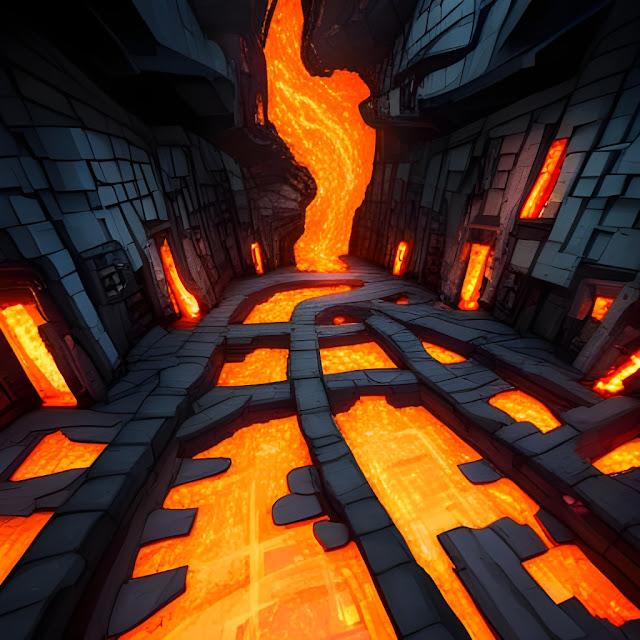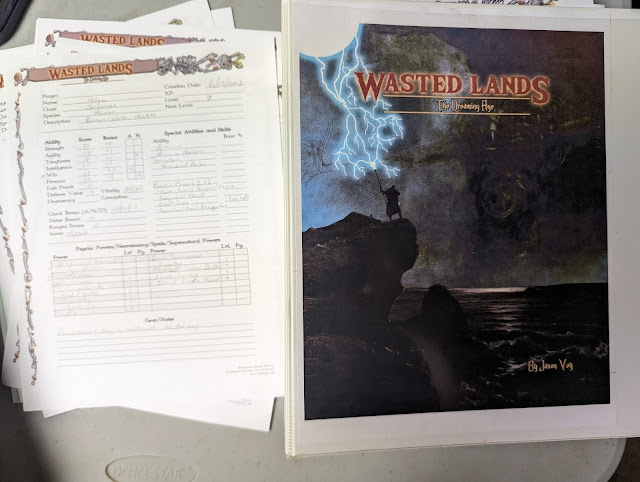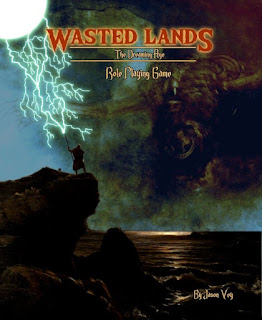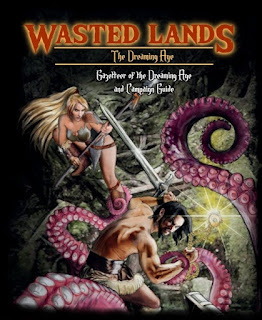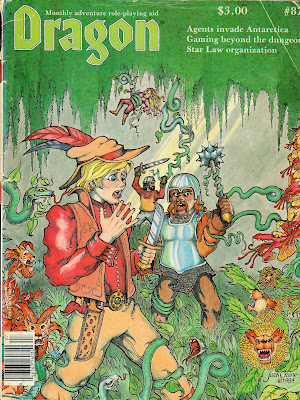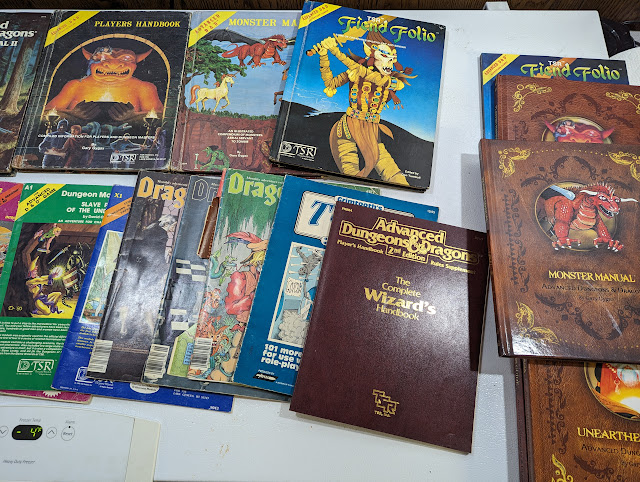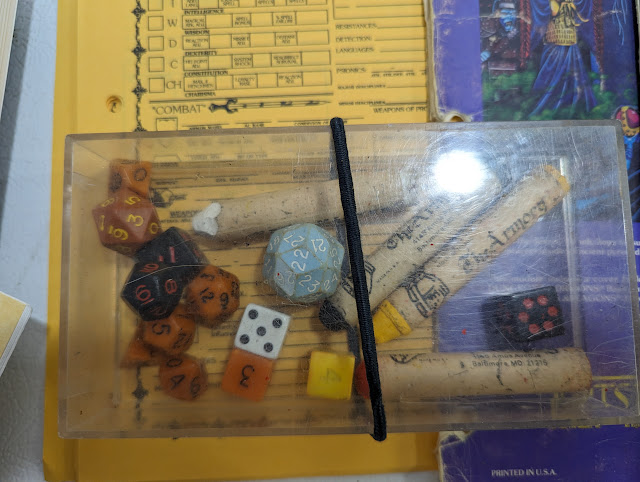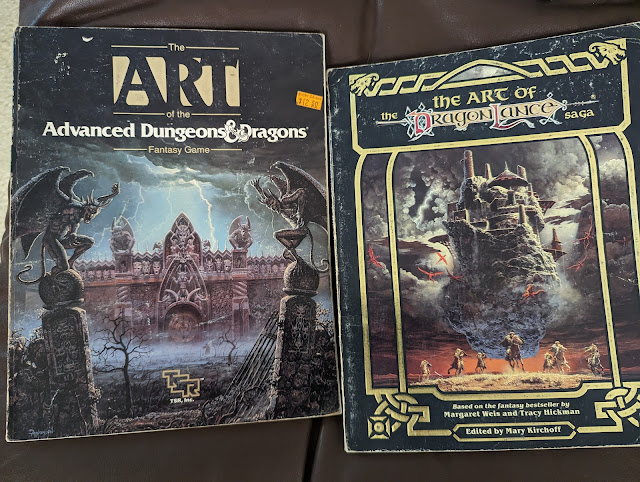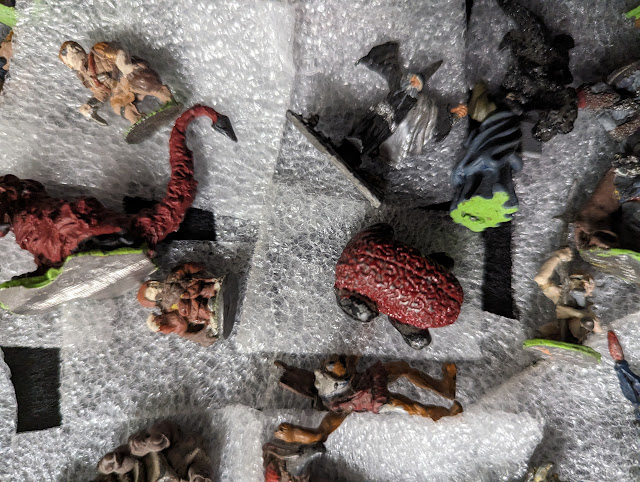
The city of Spireholm stands at the southern tip of Karanthia, a country on the coast of the Balkans known as Europe’s Fang. Its isolation and its surrounding savage landscape has made it a feared target for any would-be conqueror, but that is not the only reason. In an age of modernity, industrialisation, and enlightenment, Spireholm and Karanthia are the last refuge of monsters and horrors, cast out from the rest of the continent. In Spireholm and Karanthia, myth and legend are real, and monsters walk the streets, let alone stalk the night, some welcome, others not. Constructs and creations given form and life. Shapeshifters and werewolves and the invisible. The Mad Genius. Vampires and warriors cursed with immortality. The Lucky fools who have made Faustian pacts and deals with dark patrons. The undead and those who would deal with the undead. The Monster Hunter as well as the biologist more concerned with cataloguing such creatures rather than killing them. Yet there are those in the city who do look to the outside world and trade has begun to flow readily through Spireholm’s harbour as the city’s four great families vie for power, influence, and money, the watch and the militia keep the temporal peace, the Divine Order the ecumenical and moral peace, and the Ragged Lords run crime and protect the poor in the city’s worst districts. All of which takes place behind Mayor Blumquist, who despite his wheedling and grovelling, keeps all of the city’s factions happy. As social and economic change comes to Spireholm, there is another faction, one that dates all the way back to the city’s foundation and has remained hidden since, which plots to reclaim what once belonged to it. If this faction succeeds, it will turn the clock back centuries and unleash monsters the likes of which not even the good folk of Spireholm have seen on their streets!
This is the set-up for
SHIVER Gothic: Secrets of Spireholm, a supplement for
Shiver – Role-playing Tales in the Strange & the Unknown. Published by
Parable Games,
Shiver is a generic horror roleplaying game, designed to do a variety of subgenres, from modern slasher and cosmic horror to zombie outbreaks and Hammer Horror melodramas, using easy to build Player Characters archetypes and the Doom Clock as a device to ratchet up tension and push the story to a horrifying climax combined with its own dice mechanics. It is great for one-shots, especially ones inspired by horror films. If that seems limiting,
SHIVER Gothic: Secrets of Spireholm shows how
Shiver can do more—a lot more.
SHIVER Gothic: Secrets of Spireholm is a guide to the Gothic for
Shiver, highlighting the subgenre’s sense of isolation, decaying old order versus the new, hidden secrets, and transgressive urges.
SHIVER Gothic: Secrets of Spireholm is a guide to roleplaying the monsters of the Gothic subgenre.
SHIVER Gothic: Secrets of Spireholm is a guide to the city of Spireholm.
SHIVER Gothic: Secrets of Spireholm is a complete campaign within the city of Spireholm.
SHIVER Gothic: Secrets of Spireholm introduces a new mechanic that tracks Doom, not in hours, but days. Thus,
SHIVER Gothic: Secrets of Spireholm provides an array of new Player Character archetypes, city where they are accepted—for the most part, and a complete ten-part campaign for them to explore the city, its politics and its secrets.
To be fair,
SHIVER Gothic: Secrets of Spireholm does not dwell on the nature of the Gothic for very long and nor does it provide an extensive guide to the city, but it is sufficient in both cases. Arguably then, its main focus is on playing as monsters and the campaign. The idea behind playing as monsters is that it grants the Player Characters access to supernatural powers that they will in turn use to fight the supernatural, but at the same time, they must constantly struggle with the light and the dark within themselves as well as their inner demons, and they must always be societal outcasts. What makes them monsters makes them untrustworthy. This will come into play through role playing rather than a given mechanic. If there is a disappointing aspect to
SHIVER Gothic: Secrets of Spireholm, it is this lack of mechanical means of handling the monstrous side to roleplaying these monsters. Their inclusion would have at least supported the players’ portrayal of their characters and their characters’ darker side.
SHIVER Gothic: Secrets of Spireholm provides seven Archetypes. These are Construct, the Changed, the Mad Genius, the Immortal, the Lucky Devil, the Oddly Undead, and the Slayer. For example, the Construct has the Paths of Flesh, Machine, and Stone; the Mad Genius, the Paths of the Creator and the Alchemist; and the Immortal, the Paths of the Endless and the Vampyr. Each Archetype also has access to ten abilities, from Tier One to Tier Ten. Some of these are common to each of the Paths within an Archetype, but others are specific to a Path. Then there are over twenty Backgrounds particular to the subgenre, including Sentient Machine, Coach Driver, Regal Beast, Taxidermist, Gourmet, and more. Each provides an Ability and a Flaw. For example, the ‘Person in the Portrait’ has the Ability of Cumulative Inheritance, which provides the Player Character with plenty of wealth and an opulent home that serves as a Sanctuary to hide his secret, whilst the Flaw is ‘The Aging Artifact’, which the Player Character cannot look at, lest he be Slowed, lose Hit Points, and become Cursed. He can recover, but if ‘The Aging Artifact’ is destroyed, the Player Character dies.
With seven Archetypes, fourteen Paths, and twenty-one Backgrounds,
SHIVER Gothic: Secrets of Spireholm provides the players with a wide array of build options and choices enabling them to create some classic monster types. Most of these are reinforced by the Archetypes and Paths, with the Backgrounds being used to emphasise or tweak the combination of Archetype and Path. For example, the Endless Path from the Immortal Archetype would work with the ‘Person in the Portrait’, ‘The Holy Knight’, or ‘The Regal Beast’. The end result is that the players can create characters in the style of The League of Extraordinary Gentlemen, Penny Dreadful, or Hellboy.
The second part of
SHIVER Gothic: Secrets of Spireholm is dedicated to the city and its associated campaign. It details the city itself, its history, factions, and districts in broad detail, dedicating roughly a page to each of its twelve districts. It does describe the world beyond the walls of Spireholm, if only a little, revealing that it is an alternative nineteenth century not too dissimilar to the Victorian era. It suggests ways of getting the Player Characters together, whether as members of the city watch or local militia, members or servants to the Four Families, monster hunters, or even ambassadors from abroad! Of course, the Director can just as easily mix and match these too to add further variety to the backgrounds of each of the Player Characters.
SHIVER Gothic: Secrets of Spireholm also introduces the Doom Calendar. In Shiver, the Doom Clock starts at eleven o’clock at night and counts up minute by minute to Midnight and the Player Characters’ inevitable Doooommm(!), with events triggered at ‘Quarter Past’, ‘Half Past’, ‘Quarter To’, and ‘Midnight’. The Doom Calendar instead tracks this over a month rather than an hour. Each chapter in the campaign in
SHIVER Gothic: Secrets of Spireholm has its Doom Calendar and as the days pass, the events—or ‘Doom Tolls’—on certain days will be triggered. This though, is on a day-to-day basis, but if in the course of a chapter, the Player Characters trigger the Midnight Doom Event on the Doom Clock, two days pass instead of one, hurrying the Doom Calendar towards the next ‘Doom Toll’. A Doom Calendar can be turned back, though this is challenging and done by performing certain deeds within the story. There are notes too for the Director to create her own Doom Calendar.
Almost three-quarters of
SHIVER Gothic: Secrets of Spireholm is dedicated to a ten-part campaign. Each of the ten chapters is bookended by ‘What the Director Knows’ at the beginning and at the finish, ‘Exploring the Wider Mystery’ which suggests how the Director might expand the campaign and ‘Doom Events’ which are triggered on the Doom Chapter for the chapter. Between the start and the end is the meat of the scenario, which varies from one chapter to the next, but between the chapters are a series of interludes. Initially, they cover setting up a sanctuary for the Player Characters and dealing with an NPC who can prove to be a useful ally to the Player Characters if they remain on his good side. Later, they explore the backgrounds and details of the numerous factions within the threat facing Spireholm that the Player Characters will fight and investigate.
The opening two chapters of the campaign involve the city’s major families. First, the aristocratic and influential Pontwhistles, whose fortunes are on the decline, and then the extremely wealthy and surprisingly technocratic Silvarri. In ‘A Mournful Howl’, the heir to the Pontwhistle is found dead. Investigating with the help of the city’s leading information broker, the trail leads into an abandoned library and a nest of ghouls before turning back to where it all started. The Player Characters may cheated at its end, but at least learn there are dangerous foes abroad in the city. The head of the Silvarri family, a noted inventor, engages the Player Characters to test the security of ‘The Clockwork Vault’ by breaking into the clockwork maze. This presents the Player Characters with a series of technical puzzles and traps to overcome, but once in the vault gives them access, at least temporarily, to a number of artefacts and devices. In fact, the campaign is littered with these, ready to be found and used by the Player Characters, some of the most fun being suitable for a masked ball that they will attend later in the campaign. However, none of those in the Clockwork Vault can be removed unless the Player Characters are very careful. One is integral to the plot and reveals the first hints as to the nature of the threat the city faces.
The various factions threatening the city make their first moves in ‘On Strange Tides’ when rumours of disappearances and strangers draw the Player Characters to the city’s docks. Investigating one of the ships leads to a confrontation with vampires, but there are too many and the Player Characters are forced to escape from the docks in what should be an exciting carriage chase. A local detective from the Watch guides the Player Characters into the Stacks, the behest of one of the Ragged Lords, the city’s poorest district, which has been beset by a rash of murders and disappearances. Investigating again sends them to the docks, but not the official docks. These are the Smuggler’s Dock and beyond lies the Flooded District where the Player Characters will find themselves chased by pirates, before descending upon a nest, not of vampires or spiders, but spider vampires! This is a big creepy battle with another vampiric faction. It is followed by ‘The House on the Harrowed Hill’ when the Ragged Lords invite the Player Characters to a symposium to reward them and to discuss further action, but when another guest, Archbishop Orcini of the Divine Order, is found dead, they are perfectly placed to investigate. This is the most traditional of the chapters to date, but includes advice on the order of events and how to link the clues together.
The city begins to react in ‘Quarantine’. The Divine Order, in response to the monsters kept at Madame Mordeaux’s Arena being released to run wild in the Stacks, places the city in lockdown. This takes place whilst the Player Characters are solving the murder the house on Harrowed Hill, which of course, sits atop the Stacks. Somehow the Player Characters must get across the district and escape back into the city. Before them lies a district in which monsters are running amok and cultists dedicated to the vampires are moving openly on the streets. The Player Characters may be able to rest and resupply at their sanctuary, but ultimately, they are going to have to fight their way out. More paranoia is sewn in ‘The Reaper’s Letters’ as some of the city’s most powerful figures receive notes and promptly die afterwards. At the bequest of the wheedling Mayor Blumquist, the Player Characters investigate, a process made all the more difficult by the Divine Order’s patrols. Much of the action takes place in one of Spireholm’s few green spaces, first in the woods, then in exotic gardens and wetlands, before climaxing in a poison garden. The different environment is a radical change from the campaign to date, enabling the authors to present the Player Characters with a new range of challenges.
By the end of ‘The Masquerade Falls’, the Player Characters should have learned that every reward comes with two sides, though at least they get to dress up and go to the ball. The highlight is an auction for the benefit of the city’s poor, and the highlight of the auction is another artefact the vampires want. So, the Player Characters are not just going to the ball, they are going to a heist. This chapter switches the action so that the Player Characters are more active than reactive, but whether they succeed or fail, the vampires now make their move to remove what they regard as the real threat to their plans—the Divine Order. They strike in ‘The Divine District’, turning the Divine Order’s sacrament upon itself and thus making part of it a threat rather than an obstacle. Defeating the suborned members of the Divine Order potentially gives the Player Characters access to items that will help them in the final confrontation in ‘The Sunken Spire’. The campaign comes to a climax as the Player Characters descend below, discovering Spireholm’s darkest secrets and hopefully putting an end to the plans that the vampires have for the city.
In addition,
SHIVER Gothic: Secrets of Spireholm includes the bonus Spireholm tale, ‘It Lives!’, which can be run early in the campaign. It does not actually relate to the campaign directly, but the scenario’s major NPC is the author of some of the background content given in the interludes. Playing this scenario would introduce her to the Player Characters and thus possibly give them access to this information.
SHIVER Gothic: Secrets of Spireholm is a big pulpy campaign built on a trough of archetypes. It is a horror campaign with vampires, so there are vampires on a ship, there is a masked ball, there is subversion of the blood, there is a murder mystery, there is a poison garden. The setting of Spireholm is a weird clash of archetypes too, that of Transylvania meets the fog-bound streets of London. On paper, it should not work, it is too much. Yet given that the starting point for the Player Characters is archetypal monsters and associated characters—Dorian Gray, Dracula, Doctor Jekyll and Mister Hyde, the Invisible Man, the Werewolf, Allan Quartermain—the players will already have accepted the premise for both setting and campaign by the time they have created their characters. However, the campaign is rough around the edges and as much as the players and their characters are expected to accept all of its archetypal elements, they should also expect some clichés when it comes to the storytelling. It is literally the nature of the beast.
Physically,
SHIVER Gothic: Secrets of Spireholm is a decent looking book. The illustrations feel very much like the style of Mike Mignola and Hellboy, much like the core rulebook, so have a comic book look. The book does look busy in places with some pages feeling cluttered with various stats and details which need to be highlighted and placed in boxes of their own. Lastly, the book does need an edit as there is missing text and other errors in places.
SHIVER Gothic: Secrets of Spireholm showcases how
Shiver – Role-playing Tales in the Strange & the Unknown can do more than one-shots, that with the introduction of the Doom Calendar, it can do longer stories and campaigns. Which is very welcome. Above all though,
SHIVER Gothic: Secrets of Spireholm is a chance to play out a grand pulpy campaign of Gothic action in a horrifying alternate nineteenth century. It lets the players create characters like those of the Universal Monsters—and others, and then roleplay them in the style of Hammer Horror. Which is a delicious combination.
 Name: To The Tolling of The BellPublisher: Chaosium, Inc.
Name: To The Tolling of The BellPublisher: Chaosium, Inc.




